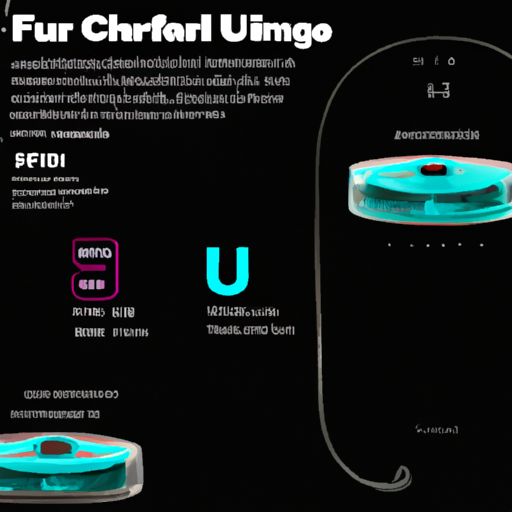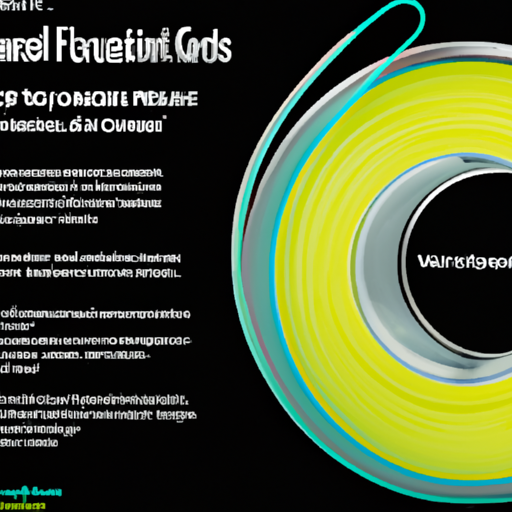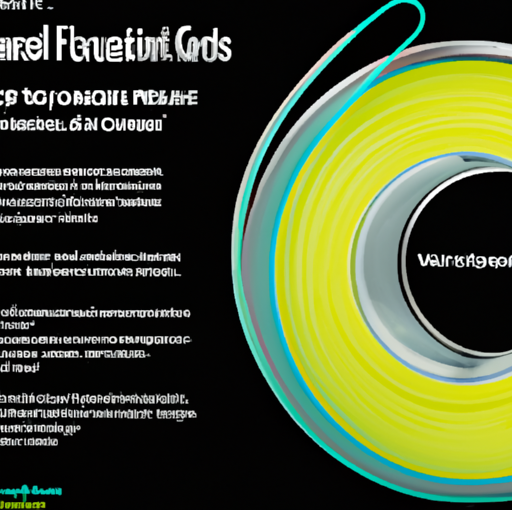Have you ever wondered what type of fishing line is the best for different fishing situations? If so, then you’re in the right place! We’re going to talk about one specific type of fishing line today: fluorocarbon. Fluorocarbon fishing line has become increasingly popular among anglers for its many benefits and advantages. In this ultimate guide, we’ll dive deep into the world of fluorocarbon fishing line and explore everything you need to know about its properties, uses, and how to choose the right one for your fishing needs.
Fluorocarbon fishing line is a versatile and durable line that offers several advantages over other types of fishing lines. It is known for its invisibility underwater, thanks to its refractive index that closely matches that of water. This makes it an excellent choice for clear water fishing situations where fish can be easily spooked by visible lines. In addition, fluorocarbon is highly resistant to abrasion, making it suitable for fishing in rough and rocky areas. It also has a higher density compared to other lines, which allows lures to sink faster, giving anglers an advantage when targeting deep-water fish. There’s a lot more to learn about fluorocarbon fishing line, so keep reading this article to become an expert on the subject!

The Ultimate Guide to Fluorocarbon Fishing Line
If you are an avid angler, you are likely familiar with the multitude of fishing lines available on the market. One type of line that has gained popularity in recent years is fluorocarbon fishing line. This versatile line has distinctive characteristics that make it a top choice among both professional and recreational anglers. In this ultimate guide, we will explore everything you need to know about fluorocarbon fishing line, from its definition to its advantages and tips for effective use.
What is fluorocarbon fishing line?
Fluorocarbon fishing line is a type of fishing line that is made from a fluoropolymer material. It is specifically designed to be used in various fishing techniques, including freshwater and saltwater fishing. What sets fluorocarbon line apart from other fishing lines is its unique composition and characteristics.
Composition and characteristics of fluorocarbon fishing line
Fluorocarbon fishing line is composed of a special type of fluoropolymer material called polyvinylidene fluoride (PVDF). This material is known for its excellent physical properties, including high strength, durability, and low visibility underwater. These properties make fluorocarbon fishing line a preferred choice among anglers who are looking for a line that performs well in different fishing conditions.
Advantages of using fluorocarbon fishing line
Fluorocarbon fishing line offers several advantages that make it a popular choice among anglers of all skill levels. Let’s explore some of the key advantages below:
Low visibility underwater
One of the main advantages of fluorocarbon fishing line is its low visibility underwater. The refractive index of fluorocarbon material is similar to that of water, making it nearly invisible to fish. This attribute allows anglers to present their bait or lure in a more natural and convincing manner, increasing their chances of getting a bite.
Abrasion resistance
Fluorocarbon fishing line is highly resistant to abrasion, meaning it can withstand the rough surfaces of rocks, vegetation, and other underwater obstacles without breaking or fraying. This durability makes it an excellent choice for fishing in areas with heavy cover or sharp underwater structures.
Sinks faster than other fishing lines
Unlike monofilament fishing lines that tend to float on the water’s surface, fluorocarbon fishing line sinks quickly. This fast-sinking property is advantageous in certain fishing techniques, such as deepwater fishing or fishing with weighted rigs, as it allows the bait or lure to reach the desired depth more efficiently.
High strength and sensitivity
Fluorocarbon fishing line is known for its exceptional strength and sensitivity. It has a higher tensile strength compared to monofilament line of the same diameter, meaning it can withstand more pressure before breaking. Additionally, fluorocarbon line transmits vibrations and bites more effectively, allowing anglers to feel even the slightest movements on the other end of the line.
Different types and brands of fluorocarbon fishing line
When it comes to fluorocarbon fishing line, there are two main types: monofilament fluorocarbon fishing lines and coated fluorocarbon fishing lines. Let’s take a closer look at each type:
Monofilament fluorocarbon fishing lines
Monofilament fluorocarbon fishing lines are made entirely of fluorocarbon material. They offer all the benefits of fluorocarbon, including low visibility and high sensitivity. These lines are available in various pound tests and line diameters, allowing anglers to choose the right strength and thickness for their specific fishing needs.
Coated fluorocarbon fishing lines
Coated fluorocarbon fishing lines, on the other hand, are made by coating a core material, typically monofilament or braided line, with a fluorocarbon coating. While the core material provides the strength and durability, the fluorocarbon coating enhances the line’s invisibility and abrasion resistance.
Top brands in the market
There are several reputable brands that produce high-quality fluorocarbon fishing lines. Some of the top brands include Seaguar, Berkley, P-Line, Sunline, and Yo-Zuri. These brands offer a range of fluorocarbon lines with different characteristics, making it easy for anglers to find the perfect line for their fishing style and preferences.
How to choose the right fluorocarbon fishing line
Now that you are familiar with the advantages and different types of fluorocarbon fishing lines, let’s discuss some key considerations for choosing the right line for your fishing needs.
Consider fishing conditions and target species
The first step in choosing the right fluorocarbon fishing line is to consider the fishing conditions and target species. If you plan to fish in clear water or in areas where fish are easily spooked, a low-visibility fluorocarbon line is recommended. On the other hand, if you are fishing in areas with heavy cover or rough structure, a more abrasion-resistant fluorocarbon line would be a better choice.
Evaluate line diameter and pound test
Another important factor to consider is the line diameter and pound test. The line diameter determines the line’s visibility and sinking speed, while the pound test indicates the line’s strength. Choosing the right combination of line diameter and pound test is crucial to ensure optimal performance and prevent line breakage.
Understand different line colors and their applications
Fluorocarbon fishing lines are available in different colors, including clear, green, and blue. Clear lines are ideal for situations where low visibility is critical, while green and blue lines can provide better visibility in certain water conditions. Understanding the different line colors and their applications will help you make an informed decision when choosing a fluorocarbon line.
Check for proper knot strength
When using fluorocarbon fishing line, it is essential to use strong and reliable knots to prevent breakage. Before purchasing a line, do some research to ensure that it has good knot strength and is compatible with the knots you typically use. This will help you avoid frustrating situations where the line slips or breaks at the knot.
How to spool fluorocarbon fishing line
Properly spooling fluorocarbon fishing line is crucial to prevent line twists and tangles. Follow these steps to spool your line correctly:
Preparing the fishing reel and line spool
Before spooling the line, ensure that your fishing reel is clean and in good condition. Remove any old line and check for any damage or wear. Next, secure the fluorocarbon line spool to the reel using the provided arbor knot or a simple overhand knot.
Tying the fluorocarbon line to the reel
To tie the fluorocarbon line to the reel, use a strong and reliable knot such as the Palomar or Improved Clinch knot. Make sure the knot is tightened and secure before proceeding.
Proper line spooling techniques to avoid twists and tangles
To prevent line twists and tangles, it is essential to properly spool the line onto the reel. Start by applying light tension on the line and begin reeling it onto the spool. Make sure the line is evenly distributed, and avoid overfilling the spool, as this can cause line memory and casting issues. Once the line is spooled, cut off any excess line and secure it with a line clip.
Tips for using fluorocarbon fishing line effectively
To maximize the effectiveness of fluorocarbon fishing line and ensure a successful fishing experience, consider the following tips:
Stretching and wetting the line before use
Before casting, it is recommended to stretch and wet the fluorocarbon line. Stretching the line helps reduce line memory and improves its overall performance. Wetting the line reduces friction, making it easier to cast and preventing line breakage.
Using appropriate knots for maximum strength
As mentioned earlier, using strong and reliable knots is crucial when using fluorocarbon fishing line. Learn and practice different knots that are suitable for fluorocarbon lines, such as the Palomar, Double Uni, or Trilene knot. These knots provide maximum strength and ensure a secure connection between the line and your bait or lure.
Avoiding overloading the line with heavy lures or hooks
While fluorocarbon fishing line is known for its strength, it is important to avoid overloading the line with heavy lures or hooks. Overloading can cause the line to weaken and break, resulting in lost fish and frustration. Be mindful of the line’s pound test and choose the appropriate size and weight of lures or hooks accordingly.
Proper line maintenance and inspection
Regular line maintenance and inspection are essential for prolonging the life of your fluorocarbon fishing line. After each fishing trip, inspect the line for any signs of wear, fraying, or damage. Remove any debris or foreign objects that may be attached to the line. Additionally, periodically replace the line if it becomes heavily worn or damaged, as this can compromise its strength and reliability.
Common challenges and solutions with fluorocarbon fishing line
Despite its numerous advantages, fluorocarbon fishing line can present some challenges. Let’s discuss a few common problems anglers may encounter and their possible solutions:
Line memory and coiling
Like any fishing line, fluorocarbon line can develop line memory and coil after repeated use or improper storage. To minimize line memory, store your fishing reel properly by removing any tension from the line and storing it in a cool, dry place. Additionally, regularly stretch and straighten the line before each fishing trip to reduce coiling.
Line visibility in low-light conditions
While fluorocarbon line is generally low-visibility, it can still be challenging to see in low-light conditions. To improve line visibility in such situations, consider using a colored fluorocarbon line, such as green or hi-vis yellow. These colors provide better visibility without compromising the line’s overall performance.
Line fraying and breakage
Fluorocarbon line is durable, but it can still experience fraying or breakage over time. To prevent fraying, regularly inspect the line for any signs of wear or damage, and replace the line if necessary. Additionally, avoid excessive casting or dragging the line across rough surfaces, as this can weaken the line and lead to breakage.
Tangling and bird’s nests
Tangling and bird’s nests can occur when casting with fluorocarbon fishing line, especially if the line is not spooled properly or if there is a lack of tension during casting. To avoid tangles, ensure that the line is spooled evenly and tightly on the reel. Maintain proper tension on the line during casting, and practice smooth and controlled casting motions.
Comparing fluorocarbon fishing line with other fishing lines
To better understand the benefits and considerations of fluorocarbon fishing line, it is helpful to compare it with other common fishing lines, such as monofilament and braided lines.
Differences between fluorocarbon, monofilament, and braided lines
- Fluorocarbon fishing line: Offers low visibility underwater, sinks faster, high strength, and sensitivity. Ideal for situations where fish are easily spooked or when there is a need for a fast-sinking line.
- Monofilament fishing line: Affordable, easy to handle, and suitable for various fishing techniques. Provides good visibility above water and moderate strength and sensitivity.
- Braided fishing line: Offers exceptional strength, near-zero stretch, and high sensitivity. Ideal for heavy cover fishing or situations where additional strength is required.
Advantages and disadvantages of each type
- Fluorocarbon fishing line: Advantages include low visibility, sinks faster, and high strength and sensitivity. Disadvantages include its higher cost compared to monofilament and braided lines.
- Monofilament fishing line: Advantages include affordability, versatility, and easy handling. Disadvantages include its visibility underwater and less strength compared to fluorocarbon and braided lines.
- Braided fishing line: Advantages include exceptional strength, sensitivity, and near-zero stretch. Disadvantages include potential line visibility in clear water and its tendency to dig into the reel spool.
FAQs about fluorocarbon fishing line
To wrap up this ultimate guide, let’s address some frequently asked questions about fluorocarbon fishing line:
Is fluorocarbon fishing line suitable for all fishing techniques?
Fluorocarbon fishing line is suitable for a wide range of fishing techniques, including finesse fishing, jigging, bottom fishing, and trolling. However, its specialized characteristics make it particularly valuable in situations where low visibility and fast sinking are desired.
Can fluorocarbon fishing line be used in saltwater?
Yes, fluorocarbon fishing line can be used in both freshwater and saltwater fishing. Its low visibility and excellent durability make it a popular choice among saltwater anglers. However, it is important to rinse the line with freshwater after each saltwater fishing trip to remove any corrosive salt or debris that may degrade the line over time.
How does fluorocarbon line perform in extreme temperatures?
Fluorocarbon fishing line is designed to perform well in a wide range of temperatures, including extreme cold and hot conditions. Unlike some monofilament lines that may become brittle in cold temperatures, fluorocarbon line remains flexible and reliable, allowing anglers to fish comfortably in different climates.
Conclusion
In conclusion, fluorocarbon fishing line is an excellent choice for anglers who value low visibility, abrasion resistance, fast sinking, high strength, and sensitivity. Whether you are fishing in clear water, heavy cover, freshwater, or saltwater, a well-chosen fluorocarbon line can significantly enhance your fishing experience and increase your chances of success. By considering the fishing conditions, target species, line diameter, pound test, and proper spooling techniques, you can maximize the benefits of fluorocarbon fishing line and enjoy a versatile and effective fishing experience. So, next time you hit the water, make sure to give fluorocarbon fishing line a try and experience its many advantages firsthand. Happy fishing!

